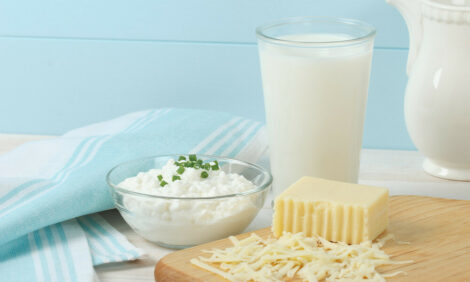



Keep the Focus on Feed Efficiency
UK - When Kingshay Dairy Manager costed herds are ranked by yield from forage, the difference between the top and bottom 25 per cent performers is worth 3p a litre in annual margin over purchased feed/litre.“That’s equivalent to £24,000 a year for every 100 cows, producing 8000 litres,” says Kingshay’s Managing Director Duncan Forbes. “With milk price at 27.82 a litre for the top 25% and 27.97p a litre for the bottom 25 per cent, the difference is explained by purchased feed costs at 5.87p/litre and 8.97p/litre, respectively.”
Figures in the recently published Dairy Costings Focus 2012 show the top 25 per cent produced 8060 litres a cow from 1.99t of concentrate or 0.24kg/litre, costing £231/t, with £24 a cow worth of additional purchased feed. The bottom 25 per cent produced 8334 litres from 2.9t of concentrate or 0.35kg/litre, costing £224/t, with £115 a cow worth of additional purchased feed. The margins over purchased feed are 21.97p/litre and £1761/cow and 19p/litre and £1579/cow, respectively.
“While there are variable costs to consider for growing forage to allow less purchased feed to be fed and additional costs when it’s conserved, well managed home-grown forage crops cost far less to produce than bought in feeds.”
Kingshay Profit Manager data, where all production costs are recorded and reported quarterly with a comparison to other herds, shows farms producing more from forage have higher forage variable costs. “This indicates a more proactive approach to reseeding and fertilising, but the extra costs were more than recovered in savings in purchased feed,” explains Mr Forbes.
“In the coming winter, purchased feeds are likely to be even more expensive than last year and it’s following a summer that has been very challenging for making best use of forage. It is going to be a tough winter to maintain or improve margins over purchased feed, but this makes it all the more important to focus on making best use of what you have in the clamp, with balanced winter rations that consider the economics of pushing for extra litres carefully.
“In reality, making significant improvements in yield from forage is likely to come from a planned approach to improving forage crop production and utilisation next year. Those plans should include considering sward performance to identify priorities for reseeding and options for catch crops or alternative forages, taking soil samples in the New Year to update fertiliser plans for optimum performance and attending to tracks and gateways to allow the earliest possible turnout for the farm. These activities to increase milk from forage and feed use efficiency can boost farm profits.”
TheCattleSite News Desk


